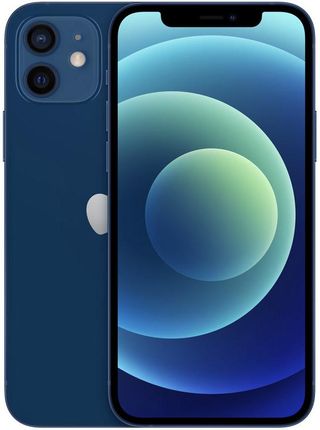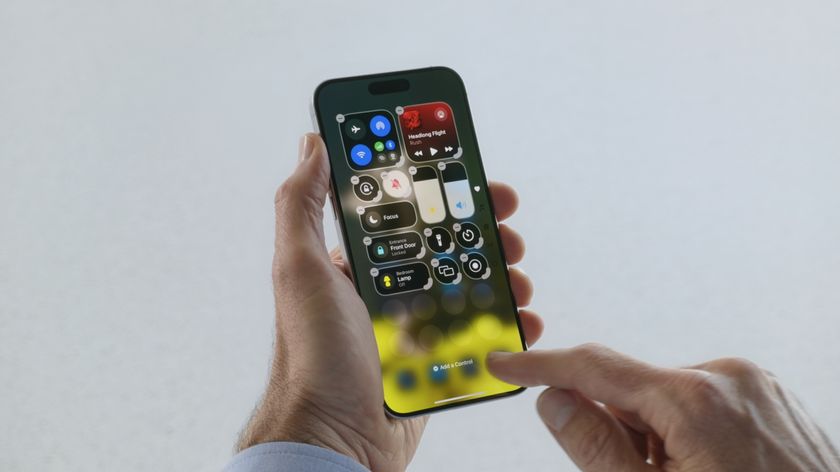Why iPhone Xs is up to 3x faster than any Android

Few people really know how to run benchmarks or interpret what they mean. AnandTech is the exception. Year in, year out, they produce the deepest dives in the silicon business. And, they've just posted their analysis of Apple's latest A12 Bionic system-on-a-chip (SoC). No spoilers, but spoilers.
From AnandTech:
Overall the new A12 Vortex cores and the architectural improvements on the SoC's memory subsystem give Apple's new piece of silicon a much higher performance advantage than Apple's marketing materials promote. The contrast to the best Android SoCs have to offer is extremely stark – both in terms of performance as well as in power efficiency. Apple's SoCs have better energy efficiency than all recent Android SoCs while having a nearly 2x performance advantage. I wouldn't be surprised that if we were to normalise for energy used, Apple would have a 3x performance efficiency lead.
Votex is the codename for the A12 performance cores, Tempest the efficiency cores (A11 has Monsoon and Mistral cores respectively).
What is quite astonishing, is just how close Apple's A11 and A12 are to current desktop CPUs. I haven't had the opportunity to run things in a more comparable manner, but taking our server editor, Johan De Gelas' recent figures from earlier this summer, we see that the A12 outperforms a Skylake CPU. Of course there's compiler considerations and various frequency concerns to take into account, but still we're now talking about very small margins until Apple's mobile SoCs outperform the fastest desktop CPUs in terms of ST performance. It will be interesting to get more accurate figures on this topic later on in the coming months.
It's not hard to believe, though. There's an old story about Steve Jobs wanting sushi at the Caffe Macs, the campus eatery. So, he got the best sushi chef he could find to make it. Likewise chipsets. When it became clear iPhone and future products would require custom silicon, the story goes Steve Jobs set out to find the best chip designers in the world.
That's now evolved into the hardware technologies org, led by senior vice president, Johny Srouji.
A brief history of A
In 2010, Apple launched the iPad with A4, the companies first in-house system-on-a-chip (SoC). In 2012, Apple shifted from licensing the ARM design to licensing the ARM instruction set, making A6 the first Apple designed SoC.
In 2013, the Apple A7 was the first 64-bit mobile processor. It caught everyone from Qualcomm to Samsung not just flat footed but flabbergasted and, in many ways, they're still struggling to catch up.
Master your iPhone in minutes
iMore offers spot-on advice and guidance from our team of experts, with decades of Apple device experience to lean on. Learn more with iMore!
In 2016, Apple A10 Fusion still mopped the floor with both the Samsung Exynos 8895 and Qualcomm Snapdragon 835 found in the Galaxy S8 when it came to single-threaded operations.
For everyone obsessing over which CPU is better for the Galaxy S8. pic.twitter.com/28TTXdIDhWFor everyone obsessing over which CPU is better for the Galaxy S8. pic.twitter.com/28TTXdIDhW— Jerry Hildenbrand (@gbhil) March 17, 2017March 17, 2017
Both Samsung and Qualcomm's chipsets do perform faster than Apple's A10 Fusion for multicore operations, but there are four high performance and four high-efficiency cores in the Galaxy S8 to the two high performance and two high-efficiency cores in iPhone 7. It literally takes twice the cores to edge ahead in the results. (Hi, meet Amdahl's Law. ) And, it turns out, their efficiency cores aren't anywhere nearly as efficient as Apple's.
Let's break that down: You have four people in the family but only one of you has a driver's license. Sure, you can get through household chores in a quarter of the time, but anything that requires a car? Not so much. The same is true for processors. If half the tasks are serial and half are parallel, a processor could have infinite cores at its disposal, but all those cores crushing their half won't help with the other half one bit.
That's what makes cores so misleading. Like comparing a Lambo to a Mac truck. More cores, like more tires, are good for some things but not everything.
Apple had obviously seen the value in over-delivering on single threaded operations and it shows. For things like interface and interactions, that's often the bottleneck. No matter how fast modern chipsets can swap, if the experience feels slow then the phone feels slow.
In other words, it's really no mystery why iPhone scrolls better and feels more responsive than anything else on the market — monstrous single-threaded processing enables it to.
In 2017, Apple A11 Bionic made the efficiency cores almost as fast as previous generation performance cores, decoupled them so all cores could be used at once, and revealed the company had spent three years integrating a neural engine block at the silicon level.
Making silicon super
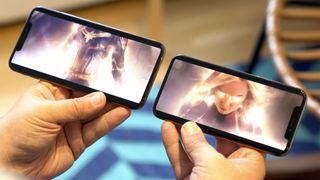
Part of what makes it unique is that Apple doesn't sell its chipsets so it doesn't have to operate like a silicon merchant. It doesn't have to worry about the shelf-life of each generation. It doesn't have to concern itself with the demands of marketing, markup, or the interests of multiple, competing vendors.
Apple's platform technologies team doesn't have to worry about being hobbled or constrained in any way — all they have to do is run iOS and iOS apps faster than anything else on the planet. That's their only customer.
It makes for an incredibly appealing work environment for legends of the industry and the best and brightest new minds, a startling number of whom have now found a home at Apple. It's a dream job that doesn't just let them dream but actively encourages them make those dreams into a reality.
We first saw what kinds of results the team could produce with the Apple A7. Rumors of it being 64-bit had run rampant yet few in the industry believed them at the time. Competitors had been content to languish at 32-bit with little or no impetus to push forward. Then iPhone 5s was announced and, instantly, everything changed.
Apple immediately leapfrogged everyone else in the industry and, in the span of a few minutes, became not just its leader but its driving force. That might sound hyperbolic but, in hindsight, it's proven true.
At first, many of us, myself included, struggled to understand why. Most fell victim to the old cliché of more bits only being useful to address larger amounts of memory, which didn't seem important on mobile. A few of us settled onto the cleaner instruction set or improved hardware security as the rationale behind the change. But what Apple really did with A7 was completely re-architect the chipset itself. That was the leap forward. 64-bit was just gravy.
Tighter integration
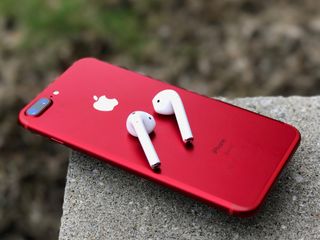
Given infinite time, any good silicon team could design a system-on-a-chip that would achieve maximum performance at maximum efficiency up to the limits of known physics in our universe. Release schedules are the opposite of infinite time, though. You get a few years to plan, but you have to ship every year.
What Apple's done to meet that demand is to establish a solid foundation and to build and iterate on it each and every year. It's not just a multi-year plan, it's a multi-year investment.
Apple has long believed that tightly integrating both software and hardware allows the company to deliver a better experience to customers. These days that's expanded to include services on one end and chipsets on the other.
It means the platform technologies team can work with the software engineer group, and industrial and human interface design groups, to make exactly the atoms to support exactly the bits and pixels Apple plans to ship.
Silicon has to work years ahead, of course, which means there's a predictive element to it not unlike shooting an arrow at another arrow that needs to not only hit it in mid-air but ensure both continue on to the bullseye. But the result is, when new features like the camera team's depth-of-field effect for Portrait Mode, the image signal processor team has built in everything they need to support it.
Conversely, Apple's silicon team also doesn't have to carry the baggage of competing vendors and devices. For example, Apple A10 doesn't have to support Microsoft's Direct X. It only and exactly has to support Apple's specific technologies and implementations.
In other words, what iOS wants fast, the A-team can deliver fast.
Peaks and geeks-benched
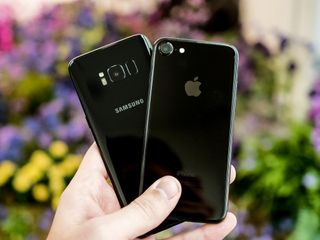
Feature sets are more important than chipsets. Apple never shipped NFC, it shipped Apple Pay. Likewise, specs and benchmarks don't matter anywhere nearly as much as user experience. But it's still the chipsets that enable those features and ensure that experience.
One of the most fascinating aspects of all the attention being paid to iPhone's performance in benchmarks relative to, for example, the Samsung Galaxy line is that it's incidental — a circumstance of great design and singular philosophy.
For A10 Fusion, pushing maximum performance on bigger cores meant leaving a gap on the low end. Pairing the high-performance cores with high-efficiency cores, and creating a performance controller to intelligently manage the switching all-but-invisibly, eliminated that gap. That controller gave Apple not only the best of both processing worlds, but a significant advantage over chipsets lacking those smarts. That carried over to A11.
For the graphics cores, Apple has long used a different, "wide and slow" approach. (And with A11, the company has gone all-in with a its first fully custom GPU.) It can handle loads as efficiently as possible but it also gives them the headroom to handle spikes when they need to. Having 8 lanes on a highway helps all the traffic flow better, even the Ferrari when it needs to hit full throttle.
You can catch that supercar hitting over 200 if that's all you're looking for, but you miss all the other throughput that's getting handled super-efficiently around it.
In other words, performance and power-efficiency go hand-in-hand. They can't be viewed separately. In fact, when done right, power efficiency enables higher performance.
20 more letters in the alphabet
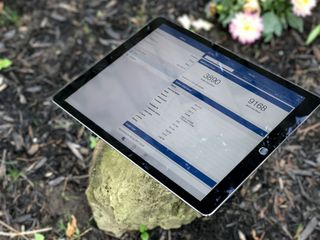
What's become increasingly fascinating of late isn't just Apple's A-series SOCs. It's the custom CPU and GPU inside them. It's the now-integrated M-series sensor fusion hubs. It's the image signal processor and the video encode/decode blocks. It's the controllers that let flash storage on an iPhone be accessed as fast as it is on a MacBook.
Recently, we've seen Apple embed a variant of the Watch's S1 system-in-package in the MacBook Pro as the T1 to handle Touch ID, Apple Pay, and other security systems. T2 in the iMac Pro handles secure booting and replaces what used to be a lot of disparate controllers. W1 made Bluetooth all but painless on the AirPods and Beats Wireless headphones, and W2 has made Apple Watch 3 far less dependant on iPhone for connectivity.
It's not that Apple wants to make every component inside every device but it feels very much like Apple wants to own every component that makes a real, palpable, differentiated experience for customers.
When Apple introduced W1, I joked that there were still 20-odd more letters in the alphabet for future Apple silicon. But the results we're already seeing with iPhone 7 vs. Galaxy S8 are no joke.
I'll spare you the cliché of "just wait until Apple puts ARM in the MacBook", but Intel should be quaking in its fabs as well. Better yet, it should be lacing up its runners and getting back in the race.
In a world where Qualcomm is more concerned with making great silicon than holding the rest of the industry ransom, where Samsung deploys custom chips up and down its line, where Nvidia ships monster mobile CPU and GPU all its own, everyone benefits. Customers most of all.
Until that happens, Apple's singular drive to make the best chipsets, to treat performance and power efficiency as one and the same, and to design silicon that specifically supports software and services, will continue to provide them with a commanding lead.
Updated to include AnandTech test results for the new A12 Bionic

Rene Ritchie is one of the most respected Apple analysts in the business, reaching a combined audience of over 40 million readers a month. His YouTube channel, Vector, has over 90 thousand subscribers and 14 million views and his podcasts, including Debug, have been downloaded over 20 million times. He also regularly co-hosts MacBreak Weekly for the TWiT network and co-hosted CES Live! and Talk Mobile. Based in Montreal, Rene is a former director of product marketing, web developer, and graphic designer. He's authored several books and appeared on numerous television and radio segments to discuss Apple and the technology industry. When not working, he likes to cook, grapple, and spend time with his friends and family.
